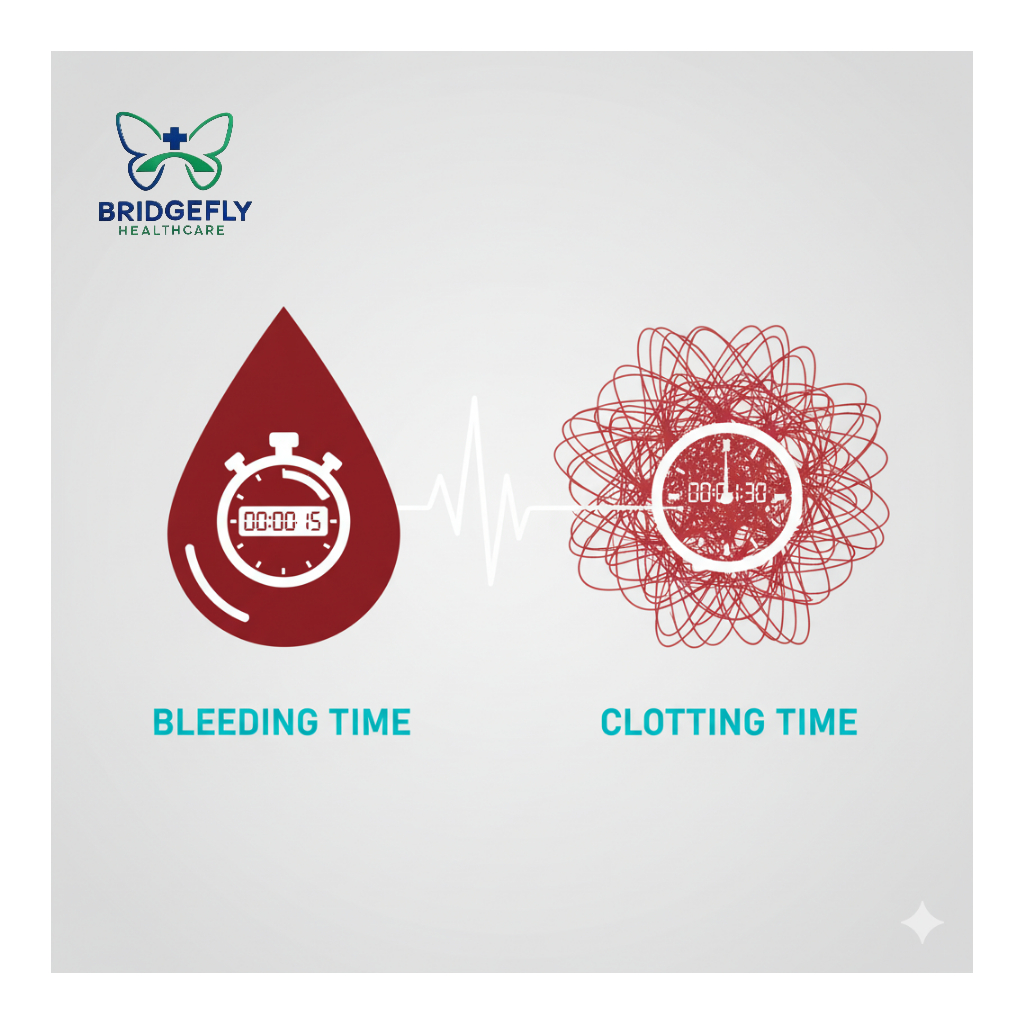
Bleeding time(BT) & Cloting time (CT)
TEST FOR COAGULATION PROFILE
₹150.00
Bleeding time (BT) and clotting time (CT) are essential laboratory tests used to assess hemostasis, the process through which the body stops bleeding. **Bleeding Time (BT)**: This test measures the time it takes for bleeding to stop after a small cut is made, typically on the forearm. It primarily assesses the effectiveness of platelet function and the vascular response to injury. Normal BT usually ranges from 2 to 7 minutes, but can vary depending on factors such as age, medications, and underlying health conditions. Prolonged BT may indicate issues like thrombocytopenia (low platelet count), certain blood disorders, or the use of anticoagulant medications. **Clotting Time (CT)**: This test evaluates the time required for blood to clot after an injury occurs. It focuses on the coagulation cascade, which is a series of complex physiological events that lead to the formation of a blood clot. The normal range for CT is generally 8 to 15 minutes, depending on the specific test used and the individual. Prolonged CT may suggest deficiencies in clotting factors, conditions such as hemophilia, or the presence of anticoagulant drugs. In summary, while BT provides insights into platelet function and initial hemostasis, CT offers valuable information about the clotting factors involved in secondary hemostasis. Understanding both tests is crucial for diagnosing various bleeding disorders and managing patient treatment effectively.